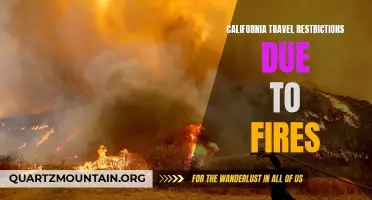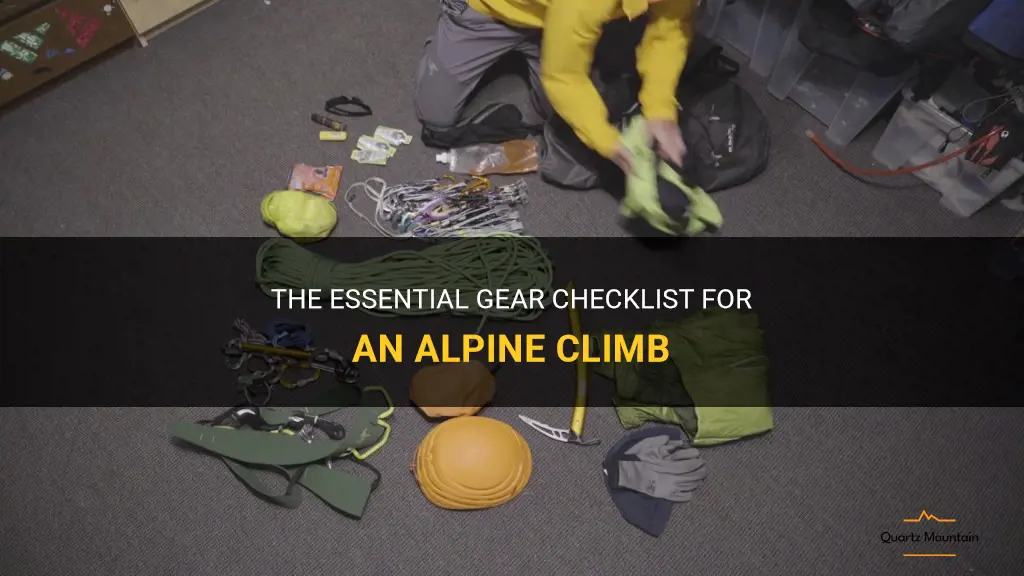
Alpine climbing is an exhilarating and demanding activity, requiring both physical endurance and technical skill. As climbers navigate through treacherous terrains and extreme climates, having the right gear becomes crucial for their safety and success. This essential gear checklist serves as a comprehensive guide, ensuring climbers are well-prepared and equipped for the challenges that lie ahead. From clothing to technical equipment, this checklist covers everything climbers need to conquer the mountains and achieve their alpine dreams. Whether you're a seasoned climber or a beginner looking to embark on your first alpine adventure, this guide will help you gather the essential gear needed for a successful climb.
| Characteristics | Values |
|---|---|
| Temperature | Cold |
| Weather | Unpredictable |
| Terrain | Steep, rocky, icy |
| Altitude | High |
| Clothing | Insulated, waterproof, windproof |
| Footwear | Sturdy boots with good traction |
| Equipment | Harness, helmet, ropes, ice axe, crampons |
| Backpack | Large, sturdy pack |
| Food and Water | High-energy snacks, water purification system |
| Navigation | Map, compass, GPS |
| Shelter | Tent or bivy sack |
| Communication | Radio or satellite phone |
| First Aid | Basic first aid kit |
| Emergency Gear | Whistle, headlamp, emergency blanket |
| Personal Gear | Sunglasses, sunscreen, gloves, hat, extra socks |
| Fitness Level | High |
| Experience Level | Advanced |
What You'll Learn
- What are the essential items to pack for an alpine climb?
- What type of clothing should I bring for an alpine climb?
- Do I need any specific gear or equipment for an alpine climb?
- Are there any specific food and water considerations for an alpine climb?
- How should I pack and organize my gear for an alpine climb?

What are the essential items to pack for an alpine climb?
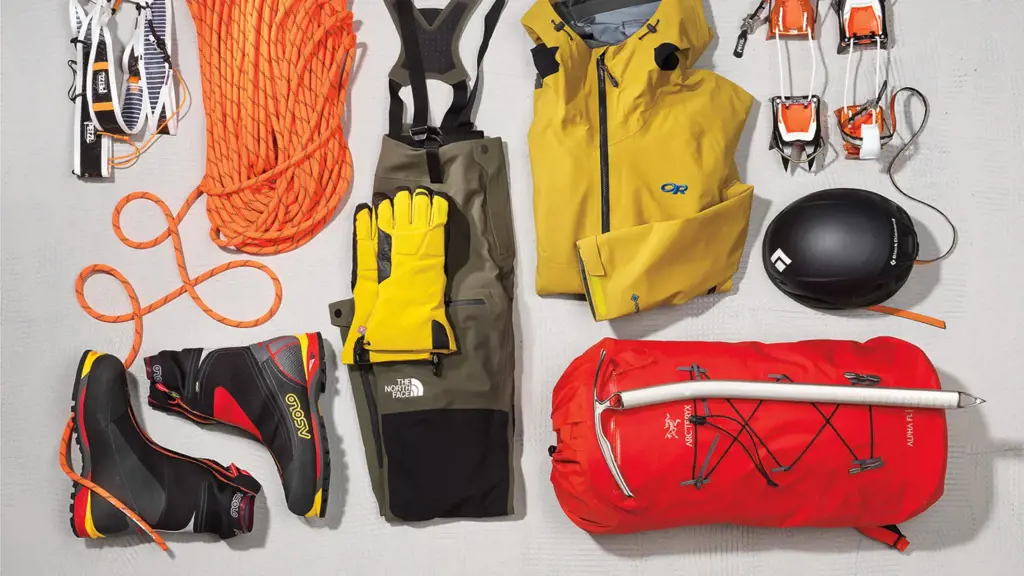
When planning for an alpine climb, it is crucial to pack all the necessary items to ensure a safe and successful journey. The alpine environment can be harsh and unpredictable, so it is important to be prepared for a variety of conditions. In this article, we will discuss the essential items that should be included in your alpine climbing pack.
- Layered Clothing: Layering is key in the alpine environment, as temperatures can vary greatly throughout the day. It is important to have a base layer that wicks moisture away from the skin, an insulating mid-layer, and a waterproof and windproof outer layer. Additionally, pack extra clothing in case of unexpected changes in weather.
- Climbing Helmet: A climbing helmet is essential for protection from falling rocks and ice, which are common hazards in alpine terrain. Look for a helmet that is lightweight and comfortable to wear for extended periods.
- Harness and Climbing Rope: A harness and climbing rope are essential for safety during technical sections of the climb. Make sure to choose a harness that fits properly and is comfortable for long periods of use. The climbing rope should be appropriate for the type of climbing you will be doing and should be in good condition.
- Climbing Shoes: A good pair of climbing shoes is essential for maintaining balance and grip on steep or slippery terrain. Look for shoes with a sticky rubber sole and a snug fit that allows for precise footwork.
- Crampons and Ice Axe: Crampons are metal spikes that attach to the bottom of your boots and provide traction on ice and snow. An ice axe is used for self-arrest and can also be used for cutting steps in the snow. Make sure to practice using both of these tools before your climb.
- Backpack: A sturdy backpack with a frame and padded straps is essential for hauling all of your gear. Look for a pack that is large enough to hold all of your essentials, but not so large that it becomes cumbersome to carry.
- Food and Water: Pack enough food to sustain yourself for the duration of your climb, taking into account the increased calorie needs associated with high-intensity physical activity. It is also important to carry enough water or a water purification system to stay hydrated throughout the climb.
- Navigation tools: Carry a map, compass, and GPS device to help you navigate through the alpine environment. Familiarize yourself with the route beforehand and make sure you know how to use these tools effectively.
- First Aid Kit: A well-stocked first aid kit is essential in case of any injuries or emergencies. Make sure to include items such as adhesive bandages, antibiotics, pain relievers, and blister care.
- Emergency Shelter and Communication: In case of unexpected changes in weather or if you become stranded, it is important to have an emergency shelter such as a bivy sack or a lightweight tent. Additionally, carry a fully charged mobile phone or a satellite communication device to call for help if needed.
It is important to remember that this list is not exhaustive and may vary depending on the specific climb and personal preferences. It is always a good idea to consult with experienced alpine climbers or guidebooks to ensure you have all the necessary items for your chosen climb. Proper planning and packing will help to ensure a safe and successful alpine climbing adventure.
Essential Items to Pack for an Unforgettable Trip to Egypt and Jordan
You may want to see also

What type of clothing should I bring for an alpine climb?
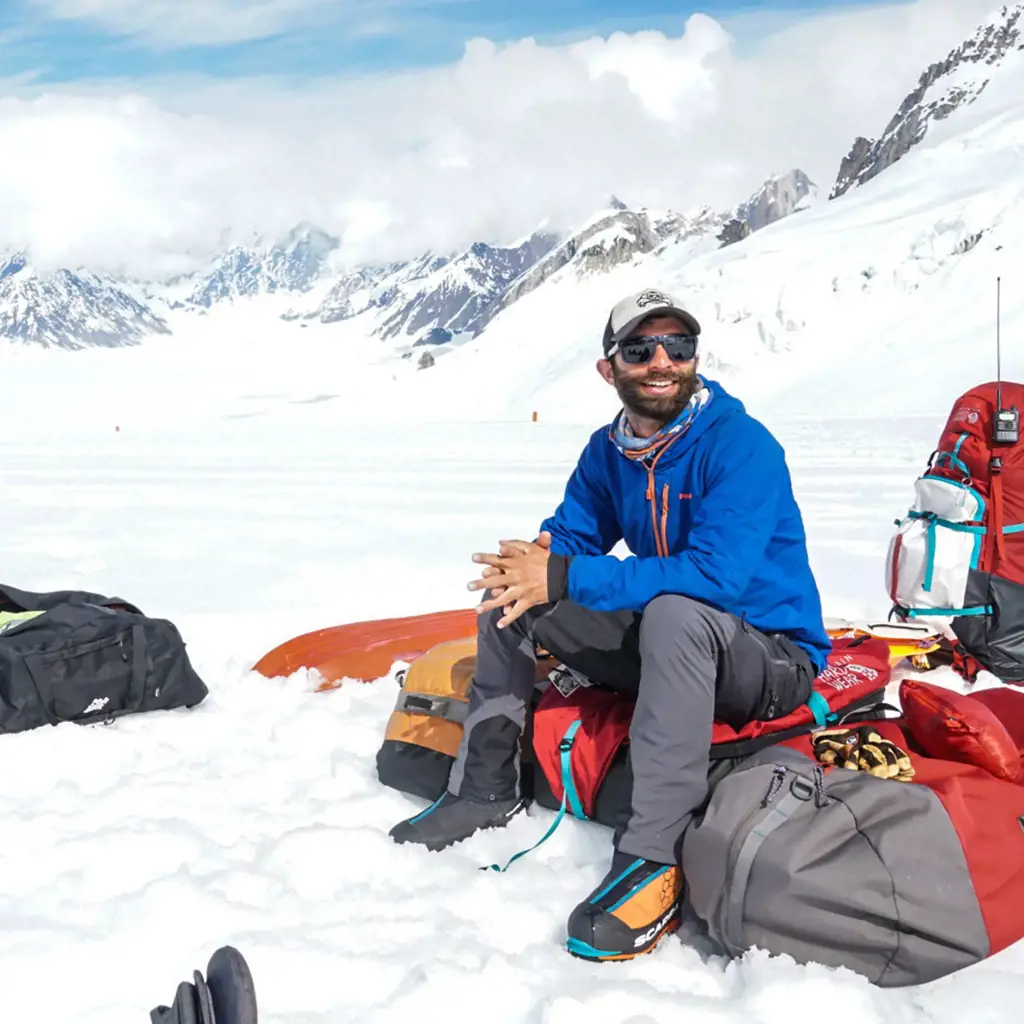
When preparing for an alpine climb, it is crucial to bring the right clothing to ensure your safety and comfort in the mountainous environment. The following guide will provide you with the necessary information on what type of clothing to pack for your alpine adventure.
- Base Layers: Start with a good set of base layers that are breathable and moisture-wicking. These layers will help regulate your body temperature and keep you dry. Look for materials such as merino wool or synthetic blends that offer insulation even when damp.
- Insulating Layers: Bring several insulating layers, such as fleece jackets or down vests, to provide warmth in the cold alpine environment. These layers should be lightweight and easily packable to save space in your backpack.
- Shell Layers: Your outermost layer should consist of a waterproof and windproof shell jacket and pants. These layers will protect you from rain, snow, and strong winds. Look for garments with a high level of breathability to prevent overheating during strenuous climbs.
- Gloves: Invest in quality gloves that offer insulation and dexterity. Consider bringing both a lightweight pair for dexterity and a heavier pair for colder conditions. Look for gloves that are waterproof and windproof to keep your hands dry and protected.
- Headwear: Bring a warm beanie or hat to cover your head and ears. Additionally, consider bringing a lightweight sun hat or visor to protect your face from the sun's rays at higher altitudes. Sunglasses with UV protection are also essential to shield your eyes from the glare of the sun on snow.
- Footwear: Choose sturdy and waterproof boots that provide ankle support and have a good grip. Make sure to break them in before your climb to avoid blisters and discomfort. Consider bringing gaiters to prevent snow from getting inside your boots.
- Socks: Pack several pairs of moisture-wicking and warm socks made from merino wool or synthetic materials. Avoid cotton socks as they retain moisture and can lead to blisters.
- Crampons: Depending on the terrain and conditions, you may need to bring crampons for added traction on icy slopes. Make sure your boots are compatible with your chosen crampons before your climb.
- Layering System: The key to staying comfortable in changing weather conditions is a layering system. Layering allows you to add or remove layers as needed to regulate your body temperature. This way, you can stay warm when it's cold and shed layers when you're exerting yourself and generating heat.
- Extra Clothing: Pack extra clothing to accommodate unexpected changes in weather or long periods spent at base camp. This includes additional base layers, socks, and insulating layers.
Remember that the weather in alpine environments can be unpredictable, with conditions changing rapidly. It is essential to stay updated on weather forecasts and be prepared for various scenarios. Additionally, consider the duration of your climb and the specific requirements of the mountain you plan to summit. Consulting with experienced climbers or guides can provide valuable insights into the necessary clothing for your specific alpine adventure.
What to Pack for a Weekend in Barcelona: Essential Travel Essentials for a Memorable Getaway
You may want to see also

Do I need any specific gear or equipment for an alpine climb?
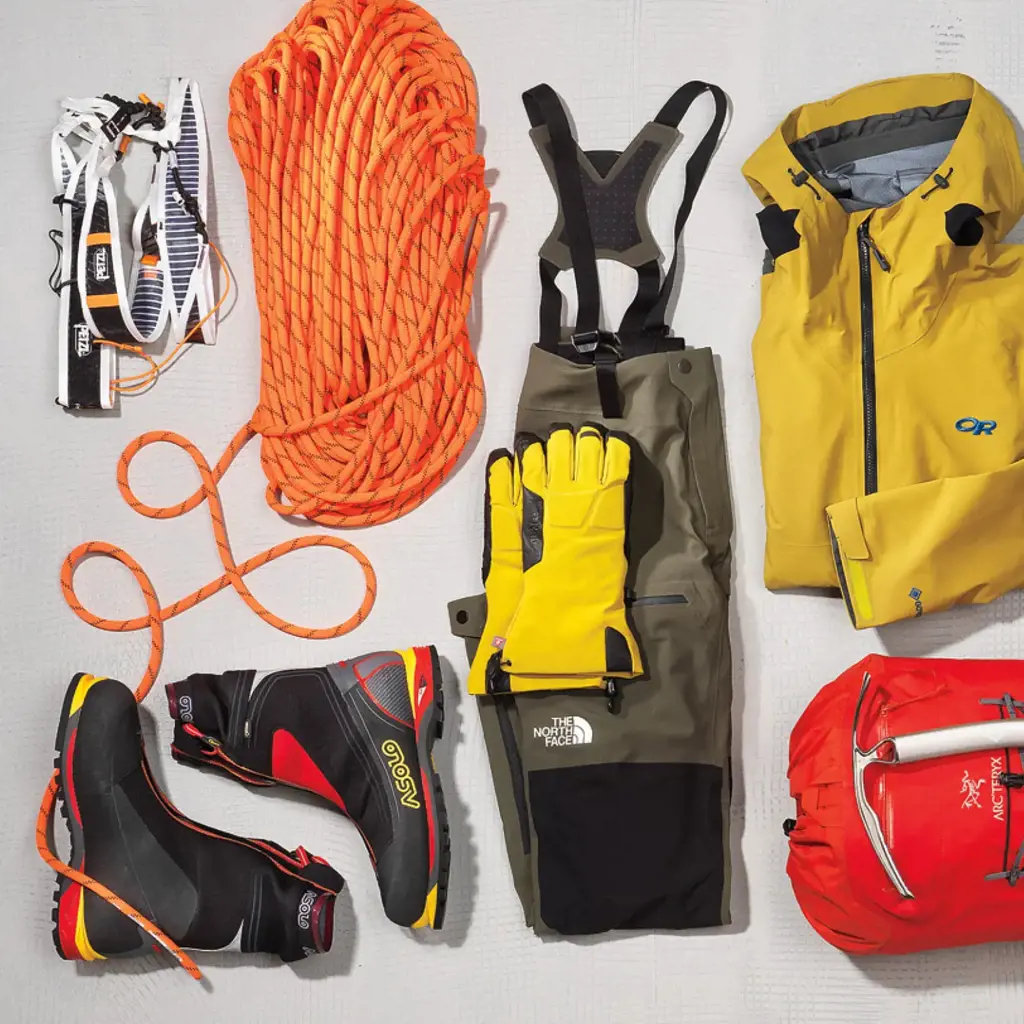
Alpine climbing is an exhilarating and challenging outdoor activity that requires careful preparation and the right gear. Whether you are embarking on a day trip or planning a multi-day expedition, having the appropriate equipment is essential for a safe and successful climb. In this article, we will discuss the specific gear and equipment you need for an alpine climb.
- Climbing Helmet: A high-quality climbing helmet is a must-have for alpine climbing. It provides protection against falling rocks and ice, which are common hazards in the alpine environment. Look for a helmet that fits securely and is designed to withstand impacts.
- Harness: A climbing harness is essential for attaching yourself to the rope during a climb. It should be comfortable and adjustable to fit over multiple layers of clothing. Make sure it has gear loops to hold your equipment, such as carabiners and quickdraws.
- Climbing Rope: A dynamic climbing rope is necessary for belaying and rappelling. The length of the rope will depend on the route you are planning to climb. Opt for a rope that is designed for alpine climbing, as it will be lightweight and durable.
- Crampons: Crampons are metal spikes that attach to your boots and provide traction on icy terrain. Look for crampons that are compatible with your boots and have adjustable bindings for a secure fit.
- Ice Axe: An ice axe is a crucial tool for alpine climbing, especially for traversing glaciers and steep snow slopes. Choose an ice axe that is the appropriate length for your height and has a comfortable grip.
- Mountaineering Boots: Sturdy and insulated mountaineering boots are necessary to withstand the cold and provide ankle support. Look for boots that are compatible with crampons and have a rigid sole for better stability.
- Layers of Clothing: Alpine climbing requires wearing multiple layers of clothing to regulate body temperature. Start with a base layer that wicks away moisture, followed by an insulating layer for warmth, and a waterproof and breathable outer layer to protect against the elements.
- Gaiters: Gaiters are essential for keeping snow and debris out of your boots. Look for gaiters that are lightweight, waterproof, and have a secure attachment system.
- Backpack: A backpack is essential for carrying all your gear and supplies during an alpine climb. Choose a backpack that is lightweight, has a supportive and adjustable suspension system, and has plenty of storage compartments.
- Navigation Tools: It is crucial to have navigational tools such as a map, compass, and GPS device to navigate the alpine terrain. Make sure you know how to use these tools effectively.
- Proper Nutrition and Hydration: Pack enough food and water to sustain yourself during the climb. Choose lightweight and high-energy snacks that provide the necessary nutrients and electrolytes.
- First Aid Kit: It is essential to carry a well-stocked first aid kit that includes items such as bandages, antiseptic ointment, pain relievers, and blister treatment.
- Communication Devices: Carry a fully charged cell phone, a whistle, and a personal locator beacon (PLB) for emergency situations. These devices can be lifesaving if you need to call for help.
- Training and Experience: In addition to the right gear, it is crucial to have the necessary training and experience for alpine climbing. Take courses in mountaineering, rope skills, and avalanche safety to develop the necessary skills and knowledge.
In conclusion, alpine climbing requires specific gear and equipment to ensure your safety and success. Invest in high-quality gear and always check that it is in good working condition before each climb. Additionally, acquire the necessary training and experience to handle the challenges that come with alpine climbing. With the right gear and preparation, you can embark on a thrilling alpine adventure.
Holland America Alaskan Cruise: Packing Guide for Your Adventure
You may want to see also

Are there any specific food and water considerations for an alpine climb?
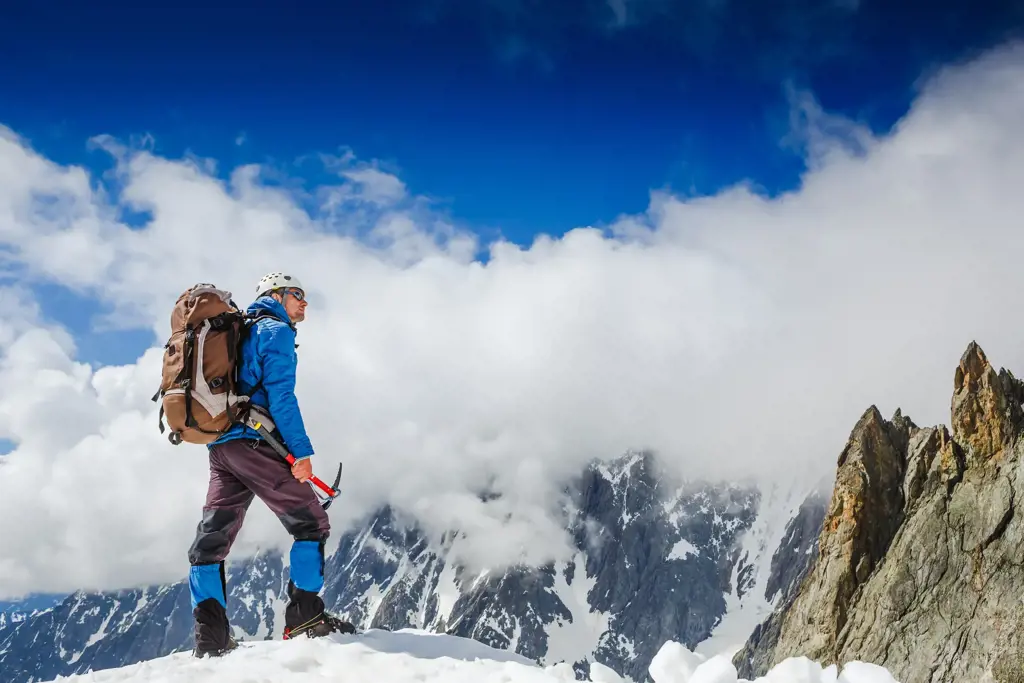
When embarking on an alpine climb, it is essential to consider the specific food and water requirements to support your body's physical and nutritional needs in a high-altitude and demanding environment. The harsh conditions and strenuous exercise involved in alpine climbing place unique demands on the body, necessitating careful attention to nutrition and hydration.
First and foremost, it is crucial to plan your food and water intake before and during the climb. Prior to the climb, ensure you are well-hydrated and adequately fueled. This includes consuming a balanced diet rich in carbohydrates, protein, and healthy fats in the days leading up to your climb. Carbohydrates provide the necessary energy for endurance activities, while protein aids in muscle repair and recovery. Healthy fats, such as those found in nuts and avocados, provide sustained energy and aid in the absorption of fat-soluble vitamins.
During the climb, it is recommended to consume small, frequent meals and snacks to maintain a steady supply of energy. Opt for lightweight, high-calorie foods that are easy to eat on the go, such as energy bars, trail mix, and dehydrated meals. It is essential to pack a sufficient amount of food to sustain your energy levels throughout the duration of the climb. Aim to consume around 200-300 calories per hour to replenish the energy burned during exertion.
In addition to food, water intake is crucial for maintaining hydration during an alpine climb. At high altitudes, the body loses water through increased respiration and sweating, which can lead to dehydration if not properly addressed. It is essential to drink regularly and consistently throughout the climb to prevent dehydration and its associated negative effects on performance and health.
To ensure adequate hydration, invest in a lightweight and durable water bottle or hydration bladder that is easy to access and carry. It is also helpful to bring water treatment options, such as water purification tablets or a water filter, in case natural sources of water need to be replenished.
While it may be tempting to rely on melting snow for water, it is important to note that snow requires a significant amount of energy to melt and may not provide an adequate amount of water for hydration. It is advisable to supplement melted snow with water sources found along the route or carried with you.
Furthermore, it is crucial to maintain a balance between hydration and mineral intake. Sweating during physical exertion results in the loss of electrolytes such as sodium, potassium, and magnesium. These minerals are crucial for proper muscle function and overall bodily health. Consider supplementing your water intake with electrolyte-rich sports drinks or electrolyte tablets to replenish these essential minerals.
In conclusion, specific food and water considerations are necessary for an alpine climb. Prioritize a well-balanced diet rich in carbohydrates, protein, and healthy fats before and during the climb to support energy levels and aid in muscle recovery. Stay well-hydrated by drinking consistently and regularly, considering both natural water sources and supplementary hydration options. Finally, remember to replenish electrolytes to support proper muscle function and overall health. By paying careful attention to your food and water intake, you can ensure that your body is adequately supported during the challenges of an alpine climb.
Packaging Materials: A Comprehensive Guide to Safely Shipping Your Items
You may want to see also

How should I pack and organize my gear for an alpine climb?
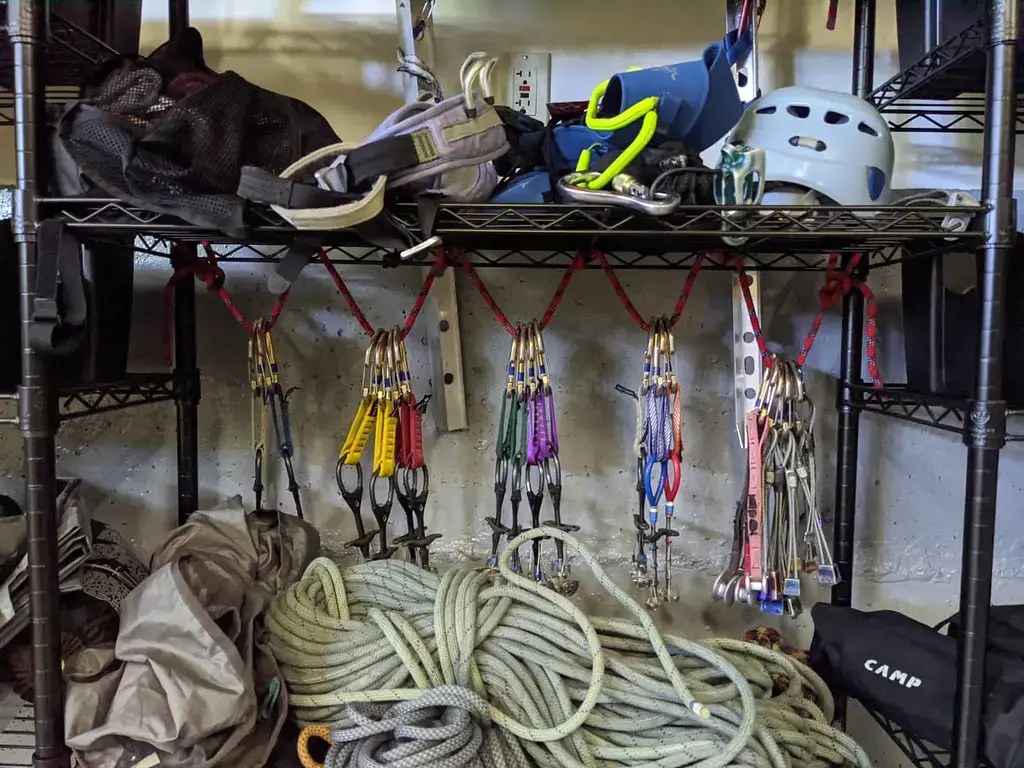
When it comes to packing and organizing your gear for an alpine climb, it is important to be strategic and efficient. The nature of alpine climbing requires you to carry everything you need on your back, so it is essential to pack smartly in order to have a successful and comfortable climb. Here are some tips on how to pack and organize your gear for an alpine climb.
- Make a gear list: Before you start packing, create a comprehensive gear list to ensure you have everything you need for the climb. Consider the specific requirements of the route, weather conditions, and the length of your climb. Your gear list should include items such as technical clothing, climbing gear (ropes, harness, belay devices, etc.), camping gear, food and water, and personal items such as a first aid kit and toiletries.
- Organize by weight and accessibility: When packing your gear, prioritize weight and accessibility. Placing heavier items closer to your back will help distribute the weight more evenly and make it easier to carry. Keep items that you may need throughout the day, such as snacks, water, and a map, in easily accessible pockets or compartments.
- Use a packing system: Consider using a packing system to keep your gear organized and easily accessible. A popular packing system is to use stuff sacks or dry bags to separate gear by category. For example, you could use one stuff sack for clothing, another for camping gear, and a separate bag for climbing gear.
- Pack strategically: Be strategic in how you pack your gear to maximize space and weight distribution. Place larger, bulkier items on the bottom of your pack, such as a sleeping bag or tent. Roll or compress clothing to minimize space and pack them around the larger items. Keep sharp or heavy objects away from your back to avoid discomfort or injury.
- Consider layering: Layering your gear can be beneficial, especially when it comes to clothing. The weather in the mountains can change rapidly, so having easily accessible layers can help you adapt to changing conditions. Pack items such as base layers, insulation layers, and a waterproof shell in a way that allows you to easily add or remove layers as needed.
- Don't forget about safety equipment: Alpine climbing requires proper safety equipment, such as a helmet, harness, and ropes. These items should be easily accessible, either by attaching them to the outside of your pack or by placing them in a dedicated pocket or compartment.
- Test your gear before the climb: Before embarking on your alpine climb, it is important to test your gear to ensure everything is in working order. This includes testing your climbing equipment, camping gear, and any electronic devices you plan to bring. The last thing you want is to discover a malfunctioning piece of gear while on the mountain.
In conclusion, packing and organizing your gear for an alpine climb requires careful planning and consideration. By creating a gear list, organizing by weight and accessibility, using a packing system, packing strategically, considering layering, and testing your gear beforehand, you can ensure a successful and comfortable climb. So, pack smartly and enjoy your alpine adventure!
The Essential Packing List for a Memorable Two-Week Trip to France
You may want to see also
Frequently asked questions
When packing for an alpine climb, it is important to bring clothing that is suitable for a range of weather conditions. This includes a base layer, which should be made of moisture-wicking material to keep you dry, and a mid-layer for insulation. It is also important to bring a waterproof and windproof outer layer, such as a hardshell jacket and pants, to protect against the elements. Additionally, don't forget to pack warm socks, gloves, a hat, and sunglasses to protect against the sun and cold temperatures.
When preparing for an alpine climb, it is crucial to have the right equipment to ensure your safety and success. Some essential items to pack include a climbing harness, helmet, ropes, carabiners, and crampons. You will also need an ice axe for self-arrest and a backpack to carry all of your gear. It is important to familiarize yourself with the technical requirements of the specific climb you will be undertaking and pack accordingly.
Nutrition and hydration are key factors in a successful alpine climb. It is important to bring enough food and water to sustain your energy levels throughout the climb. Portable, high-energy snacks such as energy bars, nuts, and dried fruits are ideal for fueling your body. It is also recommended to bring a water bottle or hydration system to ensure you stay hydrated throughout the climb. Depending on the length and difficulty of the climb, you may also want to consider bringing a stove and lightweight cooking equipment to prepare hot meals and drinks.


